Text and Photos by Evangeline T. Capuno
If there’s a region that’s fit for royalty, it’s Davao. After all, it is home to some of the country’s icons: King of the Philippine mountains (Mount Apo), Queen of Orchids (“waling-waling”), King of Philippine birds (Philippine eagle), and King and Queen of Philippine fruits (durian and mangosteen, respectively). Recently, it has been called the Cacao Capital of the Philippines.
Located in the southeastern part of Mindanao, it has five provinces: Davao del Sur, Davao del Norte, Davao Oriental, Davao Occidental and Davao de Oro (formerly called Compostela Valley).
“In all this region’s provinces, (visitors and guests) get their fair dose of adventure whether it be the highland experience, through scenic mountain ranges and waterfalls, or the island experience, through the white sand beaches,” said the regional office of the Department of Tourism (DOT). “The Davao Region feeds not only those hungry for the outdoors, but also those hungry for great Filipino food.”
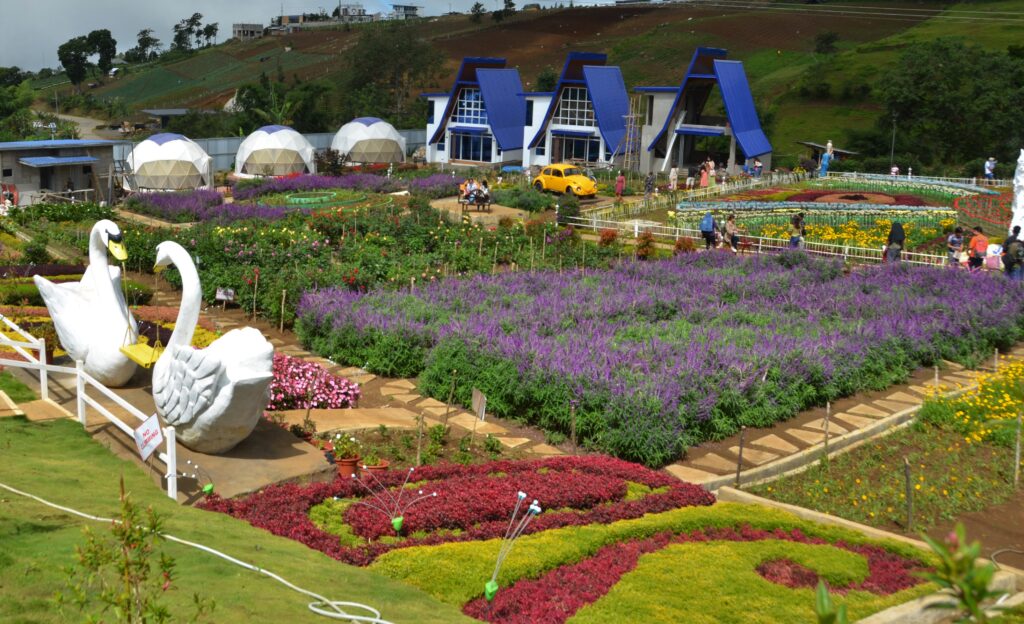
Davao City
The regional center is Davao City. With a land area of 244,000 hectares, it is approximately 7.8 times the size of Cebu and three times that of the entire Metro Manila. It is a melting pot of more than million people, both indigenous and migrants now being acculturated into the mainstream of society, creating a unique cosmopolitan culture.
If you have only a few days to spend in Davao City, here’s a brief guide. Tour the heart of the city first. Go and visit the City Hall on San Pedro Street. Not far is the legislative building, whose façade has the famous freedom statue designed by the talented Kublai Milan. Adjacent to the statue is the historic San Pedro Cathedral.
Don’t miss going to the D’Bone Collector Museum (shades of one of those Smithsonian museums in Washington, D.C.) in barangay Bucana.
From there, take a taxi and tell the driver to bring you to People’s Park (yes, it’s Davao’s counterpart of Manhattan’s Central Park) in Legazpi Street. It’s a place where people gather around, stroll and cross bridges, watch man-made waterfalls, or sit under the shade of beautiful trees.
The next stopover: the Davao Crocodile Park, located at the Riverfront Corporate City along Carlos P. Garcia Highway in Ma-a. Not far from the crocodile park is the GAP Farming Resort Davao City’s original tourist destination.
Further south is the Philippine Eagle Center – home to the country’s bird icon – in Malagos, Calinan District. Leave your hotel early in the morning as the travel time is about one hour from the city to the center.
About two kilometers away from the eagle center is the Malagos Garden Resort. Sculptures, done by national artist Napoleon Abueva, are displayed all over the place.
Don’t miss: Eden Nature Park and Resort, a beautiful man-made resort nestled in the foothills of Mount Talomo in Toril. At 2,650 feet above sea level, it offers a breath-taking bird’s-eye view of the city and the Davao Gulf in the distance.
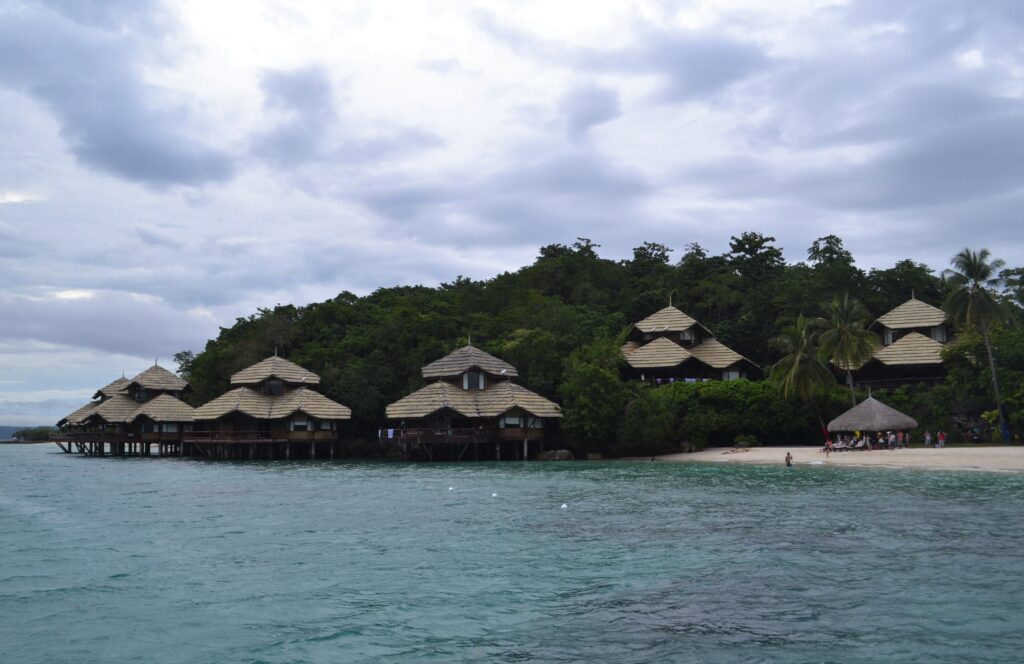
Davao del Norte
Davao del Norte is composed of three cities and eight municipalities. It has several caves that can be explored; these are located in Kapalong, New Corella, Asuncion, and Island Garden City of Samal.
Speaking of Samal, it is the only city of Davao Region which is not part of Mindanao island. With a coastline of coconut trees, white beaches, rock formations, mangroves, coral reefs, and small fishing barangays, it “a great escape for all tourists who enjoy sun and sand.”
Davao del Sur
Davao del Sur is home to various destinations. The area located at the foothills of Mount Apo is a haven for tourists. In Balutakay, Bansalan, among the top attractions are Haven’s Dew, Sir Ped’s Café, and Twin Mountains. In Kapatagan, Digos City, the following are known: Camp Sabros, Monte Frio, and Benzone Apple Farm.
Also located at the foot of Mount Apo is the Bagobo Cultural Village of Santa Cruz. The hospital tribe is known for this simple life. Visitors can join in some of its community activities and festivities.

Davao Oriental
Davao Oriental is home to the one and only UNESCO World Heritage Site of Mindanao. The Mount Hamiguitan Range Wildlife Sanctuary takes pride in being home to a unique pygmy forest of century-old trees.
Mati City is known for its Dahican Beach, touted to be the Skimboarding Capital of Mindanao. Aliwagwag Falls, located in Cateel, is considered one of the most beautiful waterfalls in the country; its towering waterfalls are considered as the highest in the country.
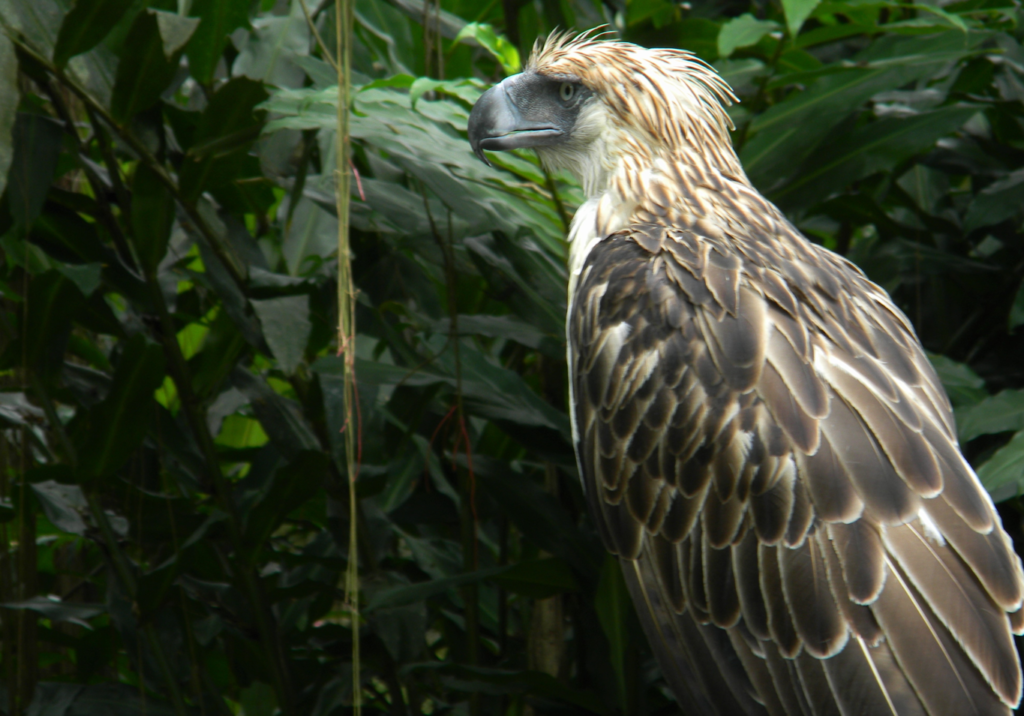
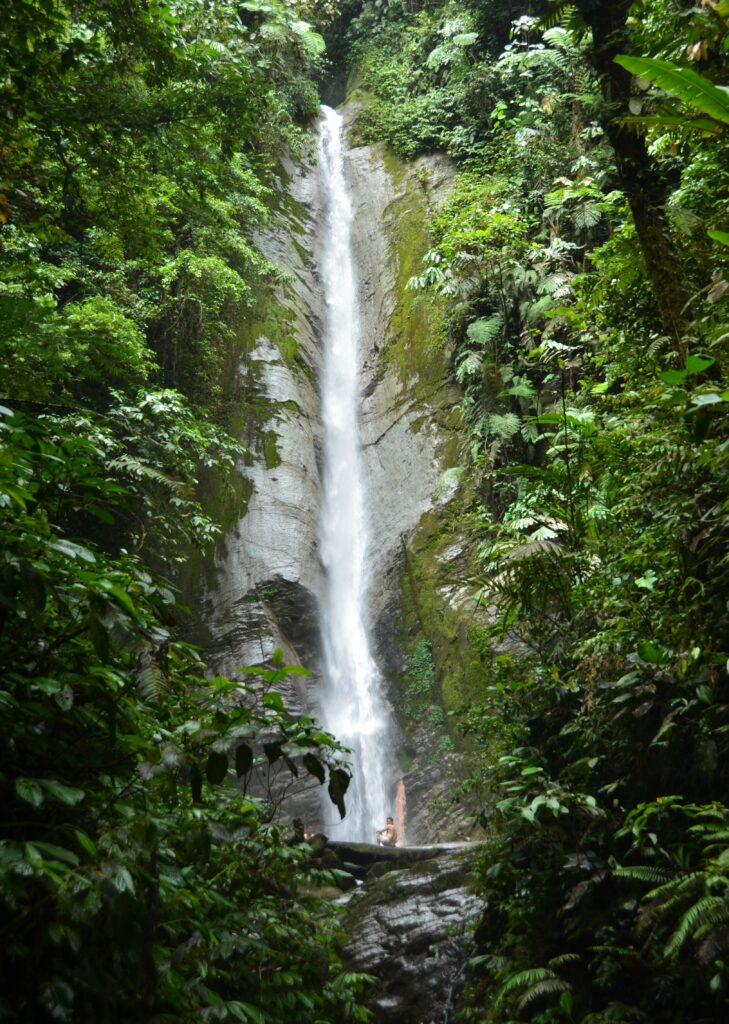
Davao de Oro
Davao de Oro, with 11 towns, has several destinations. Maragusan is home to several waterfalls, including the Tagbibinta and Pyalitan Falls. If you’re lucky, you may have an opportunity to see the famous Rafflesia Mira in Mount Candalaga.
Lake Leonard, a small freshwater crater lake in Maco, is a must-visit place. Here, you can sail around the quiet lake as you take in lush, rolling hills, beautifully reflected in the tranquil water.
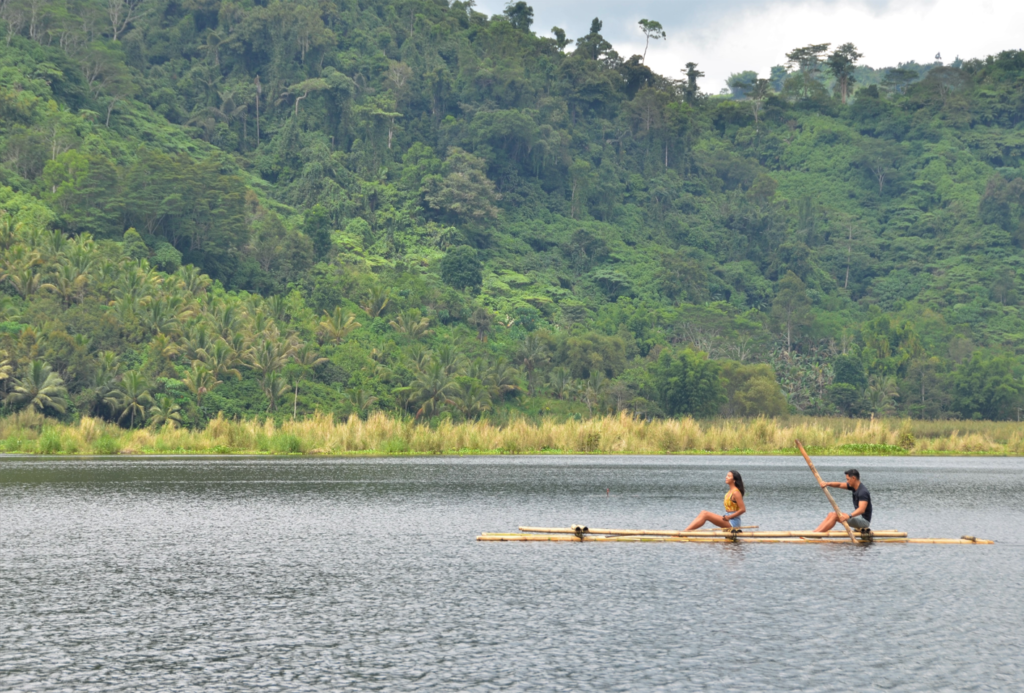
Davao Occidental
Davao Occidental has the following tourist spots: Balut and Olanivan Islands, Sabang Hot Spring, Little Boracay, Boale Cove, Kepiya Falls, Tuke Nonsul (an underwater paradise), Malita Museo, Don Marcelino Overview, and Titus Paradise Hilltop Park.
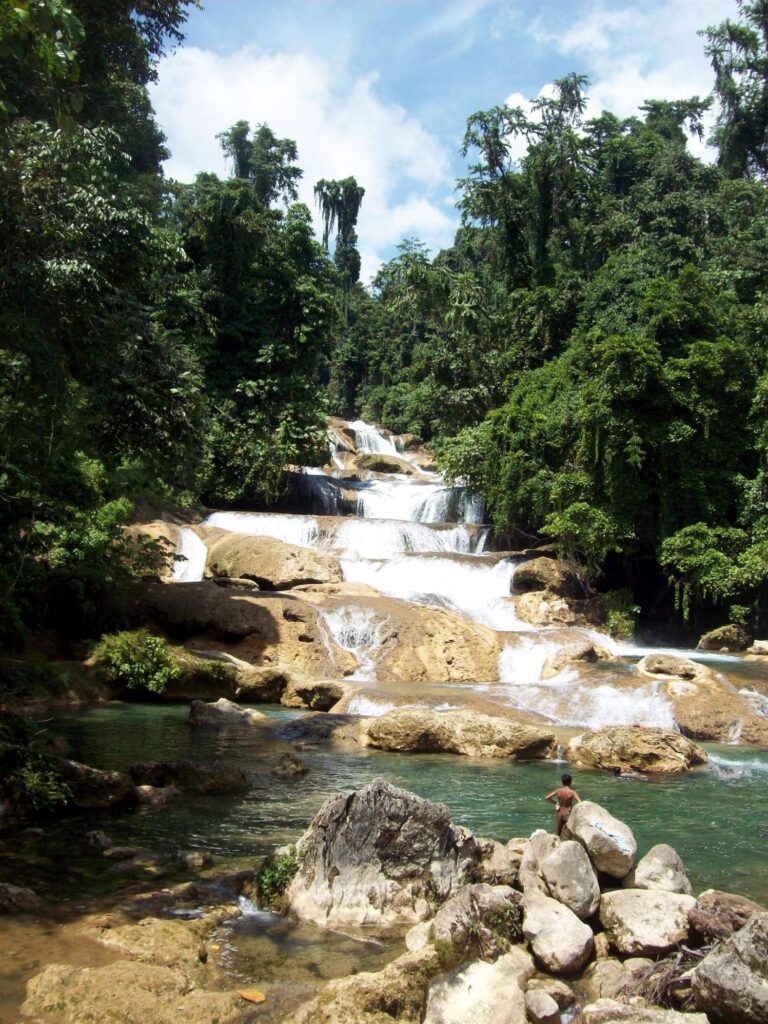
Some reminders
Now, going back to Davao City, which is one of the world’s leading producers and exporters of mango, pomelo, banana, papaya, and mangosteen. Its fertile volcanic soil makes it most suitable for sustained production of these tastiest tropical fruits in the country. Don’t miss eating the exotic durian, famous because of its spike and offensive scent (“It smells like hell, but tastes like heaven,” one scribe noted).
Just a reminder or two when you are in Davao City: Drinking of alcoholic beverages is allowed only until 1 am – beyond that until 8 in the morning, drinking is strictly prohibited. Smoking is also not allowed – except in the house, private vehicle, and in the smoking area of establishments that applied for exception.
There is no shortage of accommodations in Davao; among the recommended ones are the Marco Polo Davao on Claveria, the Royal Mandaya Hotel on Ponciano, the Grand Regal and the Waterfront Insular Hotel on Lanang, and the Apo View Hotel in Bonifacio. There are also lodges and inns, all around the city.
Before you leave, bring something from Davao. Colorful traditional tribal weaves and natural products of its indigenous groups are available at the Aldevinco Shopping Center. You can also visit the Davao Pasalubong Center in Palma Gil Street; among those sold are souvenir and gift items, home decors, indigenous costumes and native accessories using locally sourced and recyclable materials. For juicy pomelo and yummy durian fruits, check out those areas located in Magsaysay Park and the Madrazo Fruit Stands.
Welcome to Davao Region!








